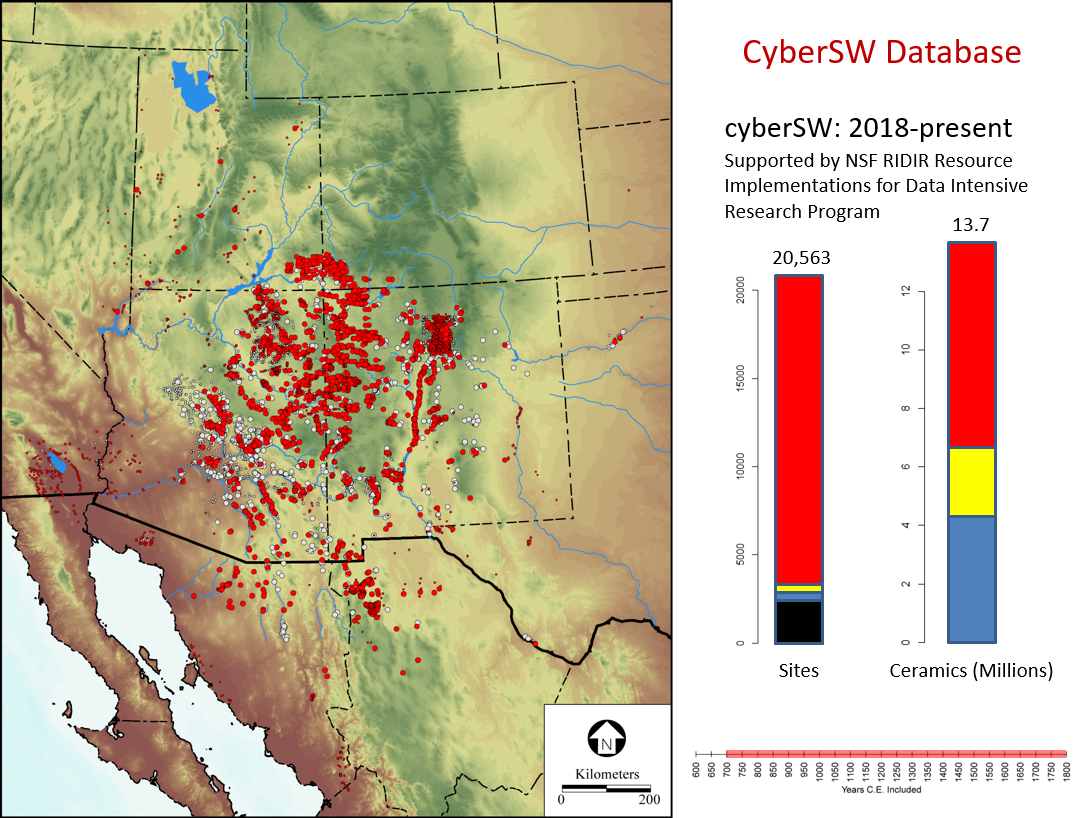Our Mission
cyberSW is a cyberinfrastructure and collaborative space for conducting interdisciplinary research on and exploring the pre-Hispanic archaeological record of the US Southwest and Northwest Mexico. Our goal is to engage not just archaeologists, but scholars from other disciplines, interested parties from federal, state, and tribal entities as well as the general public.

Background
cyberSW builds upon three previous National Science Foundation grants that focused on reconstructing pre-Hispanic demography and social networks in the Southwest (Coalescent Communities, Southwest Social Networks, Chaco Social Networks). The development of cyberSW is funded by a collaborative National Science Foundation grant (Resource Implementations for Data Intensive Research program) between the University of Arizona (PIs Barbara Mills and Sudha Ram), Archaeology Southwest (PI Jeffery Clark), Arizona State University (PI Matthew Peeples), and University of Colorado at Boulder (PI Scott Ortman) (Figure 1).
cyber-Infrastructure
At its core, cyberSW is an extremely flexible Neo4j database that is regularly updated, revised, and expanded by a fulltime database manager (Joshua Watts) and developer (Andre Takagi). At this stage much of the CRM and academic literature for the late pre-Hispanic Period and Chaco World have been absorbed into the database. With it, users can explore and analyze over 13.7 million ceramics, 350,000 flaked stone artifacts (including 10,000 sourced obsidian specimens), and 2,000 public architectural features from more than 25,000 settlements with a few keystrokes (Figure 2). But that's only a small fraction of the archaeological record of the Southwest! Ultimately, we hope to incorporate all pre-Hispanic archaeological data from the region.

- Black: Coalescent Communities
- Blue: Southwest Social Networks
- Yellow: Chaco Social Networks
- Red: cyberSW
But, cyberSW is not only a database. It's also a web application with a powerful set of analytical and exploratory tools. The current functions of the web app fall into three general categories: (1) exploring and visualizing the distribution of ceramics, obsidian, and public architecture; (2) exporting site records that contain citations, original data, and our aggregated data classes; and (3) an analytical toolkit that includes the Brainerd-Robinson similarity coefficient, Euclidean distance, Morisita’s overlap index, and a Uniform Probability Density analysis chronological tool developed by Scott Ortman. The chronological tool provides a date range for each site as well as the ability to divide ceramic assemblages from multi-component sites into 50-year time intervals. In conjunction with the database, these analytical tools can be used to reconstruct demography and social networks across the Southwest, from 800 to 1600 C.E